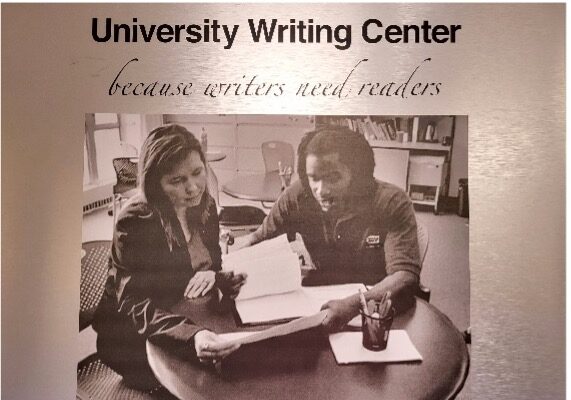by Alexandra Makris, Peer Consultant, University Writing Center
In my two-year career at the University Writing Center, I have worked with two students’ artist statements. This makes me a little sad, because I have spent three and a half years in art school so far, and I occasionally like to pride myself that I know how to speak the language of visual analysis.
Shall I go begging for art students? Maybe roam the studio halls, pens in hand and some charcoal smudged across my cheek, in an effort to naturalize myself to the environment?
But really –the writing center should be a welcoming place for all disciplines, and that includes the visual fields. If I can struggle along in comprehension during a session with a medical graduate student who is trying to explain her research and still manage to provide assistance, imagine the usefulness of a session with a fellow visual thinker!
From what I can gather, the disparity stems from various factors, such as the flawed concept of “art speaking for itself” and a dislike of revision that is general to most students. But if artists want their art to be known, knowing both how to speak and how to write about it is necessary.
Artist statements can be primarily concerned with one or more works of art or be about the artist.
- Show, don’t tell! Be visual with your words. Maybe the statement will be right next to the art, maybe not –regardless, pretend no one can see it, and you have to describe it to them with words.
- Be specific. You know what you mean, or at least you think you do. But what about your audience? Is there symbolism in your work? Significance to the media in which it is created? Refer back to elements in your art.
- Be calm. Before being asked a question for the first time, many of us don’t even know what we think or why we did something. Artist statements are no different. If this is your first time, don’t feel pressured to make everything you make relate to a big political statement. Artists have a creative urge, and the work created is influenced by their lives and their personalities, so think about your objective and what went into the creating of the work.
If you need to talk out ideas, ask a friend or a professor, but also feel free to talk it out with us at the writing center. We are here for students, and that includes those in the visual arts.

